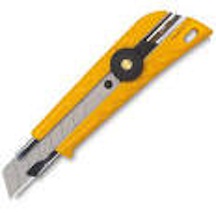Works Cited:
1- Idaho, Duncan. (2010). Basic Tools Every Carpenter Needs. Retrieved from: http://howto.yellow.co.nz/home-garden/home-repair-and-maintenance/basic-tools-every-carpenter-needs/
2- Mckay, Dawn Rosenberg. (2008). Carpenter: Career Information. Retrieved from: http://careerplanning.about.com/od/occupations/p/carpenter.htm
3- wiseGEEK. (2003). What Is A Carpenter? Retrieved from:
http://www.wisegeek.org/what-is-a-carpenter.htm
4- woodweb.com (Photographer). (2010). Retrieved from:
https://www.google.com/search?q=cabinetry&hl=en&biw=1280&bih=605&site=imghp&tbm=isch&gs_l=img.3..0j0i24l9.335407.337677.0.337838.15.14.0.1.1.0.174.1220.7j7.14.0...0.0...1c.1.haphWFigXmE&oq=cabinetry
5- chicagoproblemblusters.com (Photographer). Retrieved from:
https://www.google.com/search?hl=en&site=imghp&tbm=isch&source=hp&biw=1280&bih=605&q=finish+carpentry&oq=finish+carpentry&gs_l=img.3..0l6j0i5l2j0i24l2.403155.405235.0.405498.16.12.0.0.0.0.356.1917.2j1j5j1.9.0...0.0...1ac.1.9.img.6t0jS37C1VI#imgrc=wLERtDuqBkvt5M%3A%3B0p7Xw1gJEj9OaM%3Bhttp%253A%252F%252Fchicagoproblembusters.com%252Fwp-content%252Fuploads%252F2012%252F09%252Fchicagobusters_carpentry.jpg%3Bhttp%253A%252F%252Fchicagoproblembusters.com%252Fcarpentry%252F%3B1504%3B980
6- www.renovationexperts.com (Photographer). Retrieved from:
https://www.google.com/search?hl=en&biw=1280&bih=605&site=imghp&tbm=isch&sa=1&q=roughcarpentry&oq=roughcarpentry&gs_l=img.3...1509573.1510097.0.1510361.5.5.0.0.0.0.138.381.2j2.4.0...0.0...1c.1.9.img.KdnT-B1kHC8#imgrc=414ytrrByrmgkM%3A%3BhjFqdEZ5jUEmfM%3Bhttp%253A%252F%252Fwww.renovationexperts.com%252Fimages%252Fcarpentry%252Fframing.jpg%3Bhttp%253A%252F%252Fwww.renovationexperts.com%252Fbefore-hire-carpenter.asp%3B300%3B200
1- Idaho, Duncan. (2010). Basic Tools Every Carpenter Needs. Retrieved from: http://howto.yellow.co.nz/home-garden/home-repair-and-maintenance/basic-tools-every-carpenter-needs/
2- Mckay, Dawn Rosenberg. (2008). Carpenter: Career Information. Retrieved from: http://careerplanning.about.com/od/occupations/p/carpenter.htm
3- wiseGEEK. (2003). What Is A Carpenter? Retrieved from:
http://www.wisegeek.org/what-is-a-carpenter.htm
4- woodweb.com (Photographer). (2010). Retrieved from:
https://www.google.com/search?q=cabinetry&hl=en&biw=1280&bih=605&site=imghp&tbm=isch&gs_l=img.3..0j0i24l9.335407.337677.0.337838.15.14.0.1.1.0.174.1220.7j7.14.0...0.0...1c.1.haphWFigXmE&oq=cabinetry
5- chicagoproblemblusters.com (Photographer). Retrieved from:
https://www.google.com/search?hl=en&site=imghp&tbm=isch&source=hp&biw=1280&bih=605&q=finish+carpentry&oq=finish+carpentry&gs_l=img.3..0l6j0i5l2j0i24l2.403155.405235.0.405498.16.12.0.0.0.0.356.1917.2j1j5j1.9.0...0.0...1ac.1.9.img.6t0jS37C1VI#imgrc=wLERtDuqBkvt5M%3A%3B0p7Xw1gJEj9OaM%3Bhttp%253A%252F%252Fchicagoproblembusters.com%252Fwp-content%252Fuploads%252F2012%252F09%252Fchicagobusters_carpentry.jpg%3Bhttp%253A%252F%252Fchicagoproblembusters.com%252Fcarpentry%252F%3B1504%3B980
6- www.renovationexperts.com (Photographer). Retrieved from:
https://www.google.com/search?hl=en&biw=1280&bih=605&site=imghp&tbm=isch&sa=1&q=roughcarpentry&oq=roughcarpentry&gs_l=img.3...1509573.1510097.0.1510361.5.5.0.0.0.0.138.381.2j2.4.0...0.0...1c.1.9.img.KdnT-B1kHC8#imgrc=414ytrrByrmgkM%3A%3BhjFqdEZ5jUEmfM%3Bhttp%253A%252F%252Fwww.renovationexperts.com%252Fimages%252Fcarpentry%252Fframing.jpg%3Bhttp%253A%252F%252Fwww.renovationexperts.com%252Fbefore-hire-carpenter.asp%3B300%3B200
















